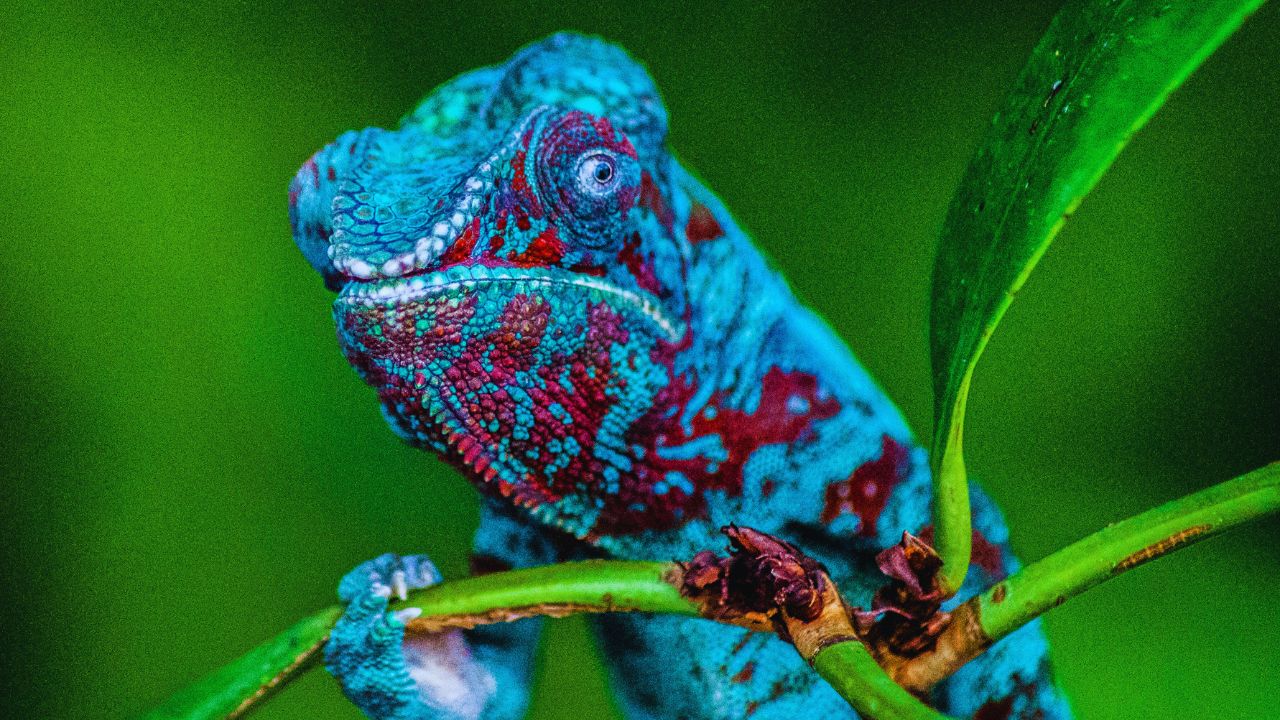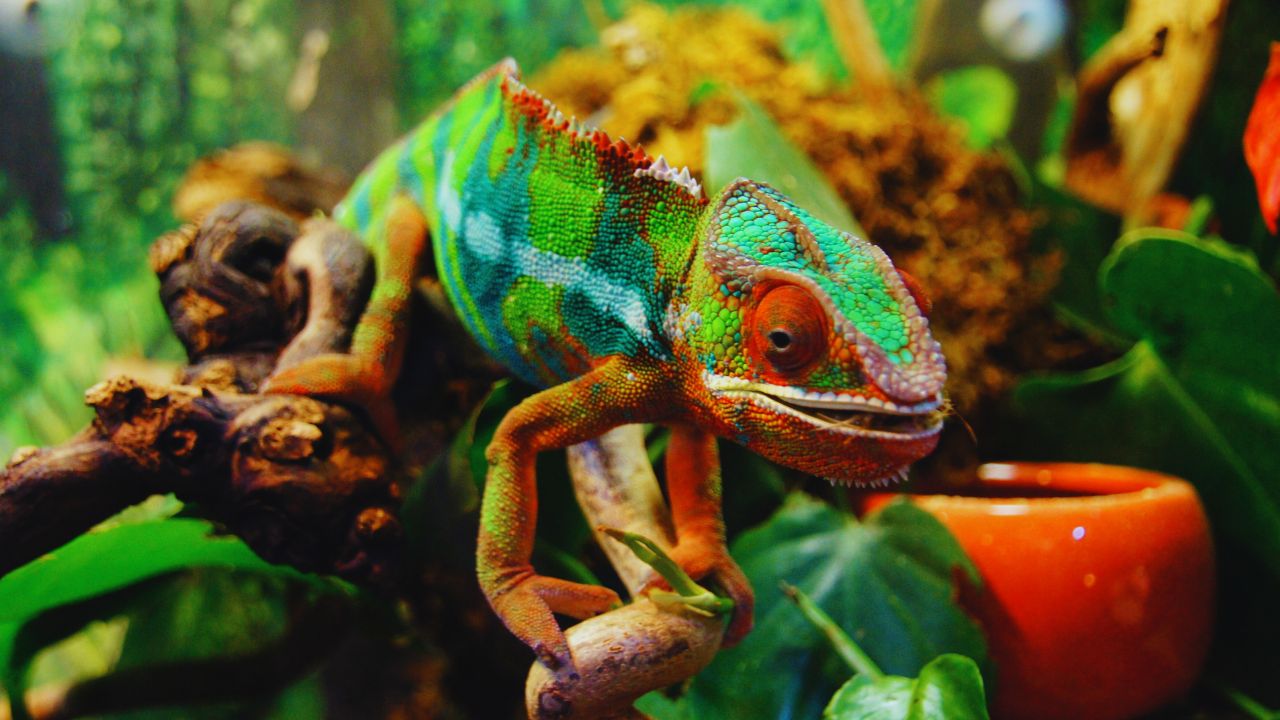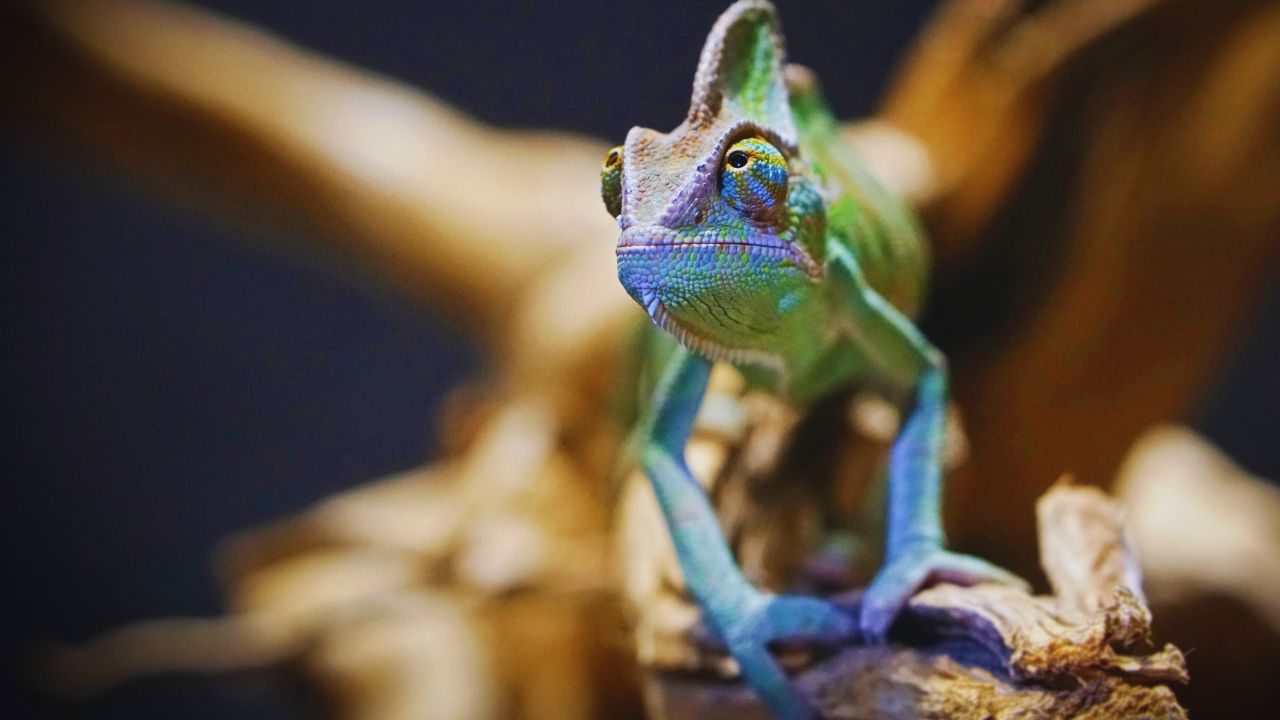Scientists and pet enthusiasts have been fascinated by the remarkable ability of chameleons to change their color, making them fascinating reptiles. The Chamaeleonidae family has more than 200 species, of which only a small number are commonly maintained as pets. The most common species among enthusiasts is the Veiled chameleon (Chamaeleo calyptratus). Since they are more adaptive than other chameleon species, which are sometimes more difficult to care for in captivity, veiled chameleons have been domesticated for more than thirty years.

It’s important for anybody thinking about bringing a chameleon home to know that these animals are protected by a number of international laws and are not just exotic pets. A permit is needed to purchase several chameleon species because they are protected under the Convention on International Trade in Endangered Species of Wild Fauna and Flora (CITES). By prohibiting the taking of live chameleon populations and encouraging responsible ownership, this legislation makes sure that the chameleon trade is both sustainable and lawful. Like many others, the Veiled chameleon is covered by this legislative protection. As a result, anybody wishing to buy a chameleon has to be careful to make sure the animal is coming from a reliable and authorized source. This article explores the price of having a chameleon in 2024, including everything from the initial purchase to the continuing expenditures of keeping a happy and healthy pet.
The Cost Associated with Owning a Chameleon
Taking care of a chameleon requires a lot of work and commitment that goes beyond just buying the pet. The cage, food, supplements, essential supplies, pet insurance, and medical care are all included in the overall cost of the chameleon. Every one of these components adds to the total amount of money needed to maintain a healthy and happy chameleon in a home setting.
Investing in a Chameleon
Cost Range: $50-500
A pet chameleon’s cost may vary significantly depending on a number of variables, such as the species, age, sex, and place of purchase. The most popular species of chameleons to be maintained are veiled ones, which usually cost between $50 and $200. Younger or more uniformly colored chameleons are often found at the lower end of this range, whereas more expensive chameleons, such the transparent Veiled chameleon, may fetch upwards of $500.
The source is a crucial factor to take into account when buying chameleons. Purchasing from pet shops, breeders, or private sellers are options available to potential owners. It is essential to confirm the legitimacy of the transaction by obtaining the relevant CITES documents, regardless of the source. By taking this precaution, you may be confident that the chameleon is procured ethically and lawfully, helping to preserve these amazing animals in their native environments.
Elements Affecting the Cost of Chameleons
Species: The costs of the many chameleon species varies. Because they are more readily available and adaptable in captivity, veiled chameleons are often more cheap. On the other hand, because of their rarity and unique care needs, rarer species could cost more.
Source of Purchase: Whether the chameleon is purchased from a breeder, a pet shop, or a private seller will also affect the price. Because selective breeding requires a great deal of attention, breeders often charge extra.
Age and Sex: Due to their brighter colors and often longer lifespans, adult chameleons are typically more expensive than juveniles. Males also tend to be more expensive than females.

The Price of Supplies and Enclosure
Cost of Enclosure: $50–400
Creating an appropriate habitat for a chameleon is among the most important upfront costs. The terrarium, or enclosure, ought to have enough room for the chameleon to walk about freely and comfortably. A chameleon habitat should be at least 18x30x30 inches, although bigger chameleons may need even more room.
A range of resources are needed to create an environment that resembles the chameleon’s natural habitat, in addition to the terrarium itself. The chameleon’s health and well-being depend on these resources, which also include plants, warmth, lighting, and a misting system.
Important Materials and Their Prices
Heating and Lighting: Chameleons need enough lighting to digest calcium, a mineral that is essential to their health. A UVB lamp is necessary for this. To keep the cage at the proper temperature, a heating bulb is also needed. Supplies for heating and lighting may run you anywhere from $50 to $150 overall.
Control of Temperature and Humidity: Because chameleons are sensitive to their surroundings, it’s important to maintain the right temperatures and humidity levels. A misting system aids in maintaining the appropriate humidity levels, and a thermometer is required to keep an eye on the temperature. These products might cost anything from $70 to $150.

Both ornamental and practical plants: In addition to being aesthetically pleasing, plants also provide chameleons vital places to hide and climb. Whether real or fake, these plants mimic the chameleon’s natural habitat, improving its general health. Plants may cost anything from $20 to $100.
Water and Feeding Systems: Chameleons like to drink from flowing water sources; thus, providing water to them requires a dripper system. In addition, a live food cage is required to contain the live insects that the chameleon eats. These devices may cost anything from $50 to $100.
Supplies Cost
Ongoing Costs of Chameleon Ownership
Food and Supplements: $150-200 per year
Live insects are the main food source for chameleons, with crickets being the most popular kind. Crickets typically cost $5 for a 10-day supply, which adds up to an annual cost of $100 to $150. To avoid nutritional deficits, chameleons need dietary supplements like calcium and vitamin A in addition to live food. The annual fee is increased by $50 for these additions.
Pet insurance: $100 to $200 year
Pet insurance is a smart investment since chameleon veterinary care may be costly. Because of their unique medical requirements, chameleons need specialist veterinarian care, which may be expensive without insurance. A chameleon’s pet insurance typically costs $10 a month, or $100 to $200 a year.
Costs of electricity: $100–200 annually
A large amount of energy is needed to maintain a chameleon’s cage, especially for the lighting and heating systems. Depending on the enclosure’s size and the owner’s environment, owners may see a rise in their yearly power expenses of $100 to $200.

Total Initial and Ongoing Costs of Chameleon Ownership
Initial Cost: $485-1,690
The whole cost of owning a chameleon, including initial and ongoing: $485–1,690. The price of the chameleon, its cage, and all other consumables make up the initial investment in the pet. The total cost may be closer to $485 for a simple setup with a younger female chameleon and a smaller habitat. However, the initial cost might go up to $1,690 if you choose a bigger male chameleon with distinctive colors and a more involved setup.
Ongoing Costs: $450-750 per year
There are recurring costs associated with chameleon ownership in addition to the initial outlay. These consist of the price of power, food, insurance, and supplements. Plants and light bulbs will eventually need to be changed, which will raise the yearly cost of the supplies. The typical annual maintenance cost for a pet chameleon is estimated to be between $450 and $750.
Taking care of a chameleon is an expensive but worthwhile undertaking. Potential owners need to budget for the initial and continuing costs of caring for these unusual and fascinating reptiles. The financial commitment is substantial, ranging from the initial purchase and setup charges to the continuing expenditures of energy, food, and insurance. Nonetheless, individuals who value the beauty and intricacy of these amazing animals may have years of pleasure from a pet chameleon with the right care and attention. Like with any pet, a healthy and happy existence in captivity for your chameleon depends on appropriate management.





